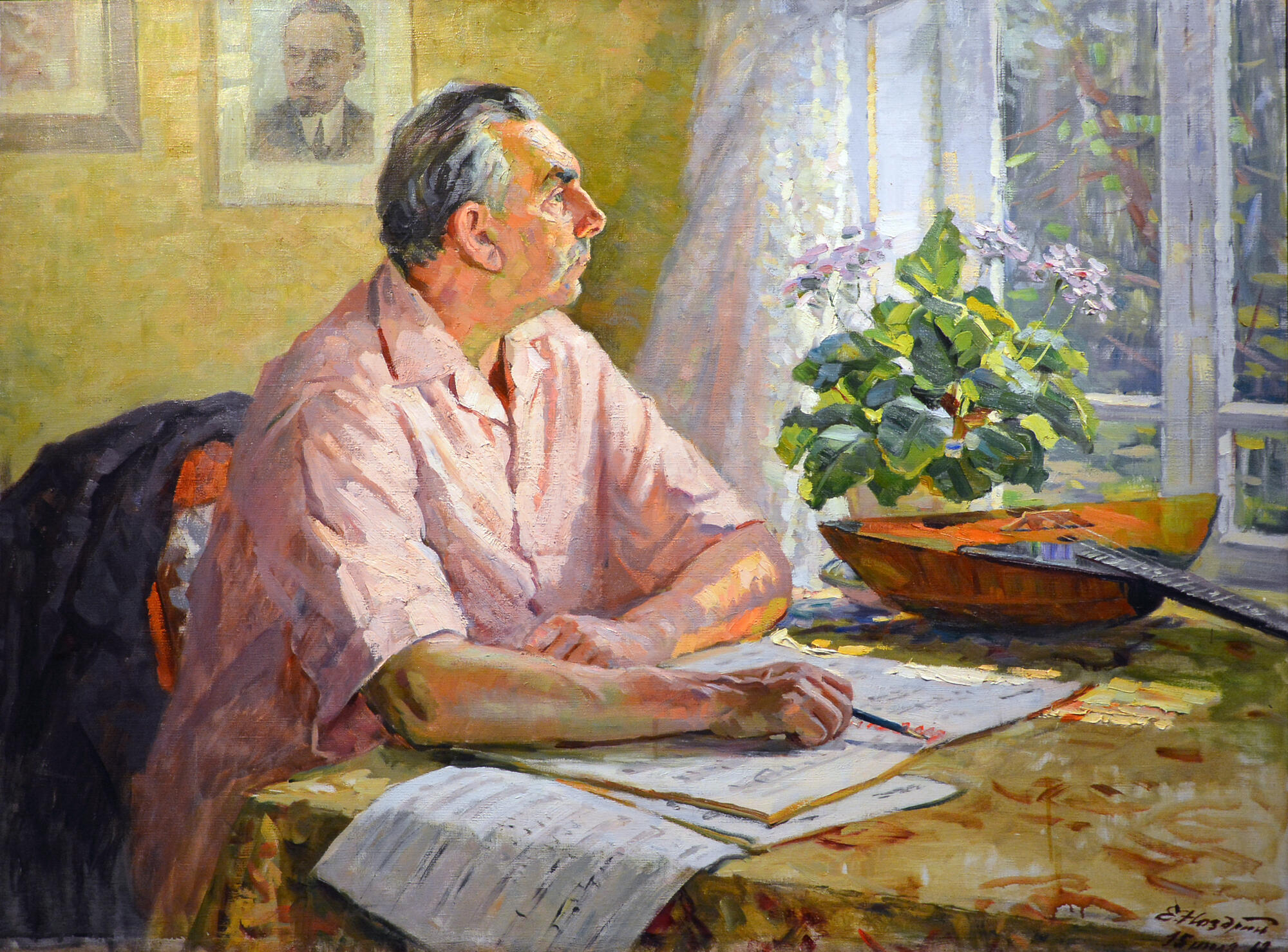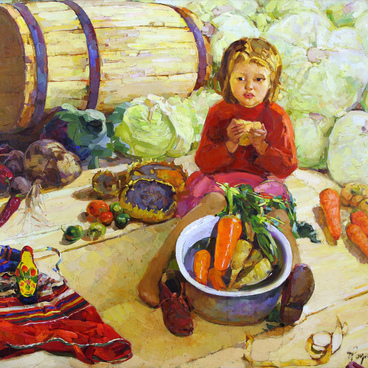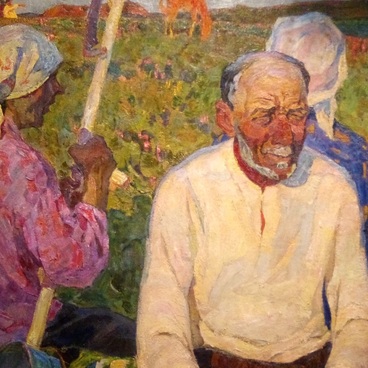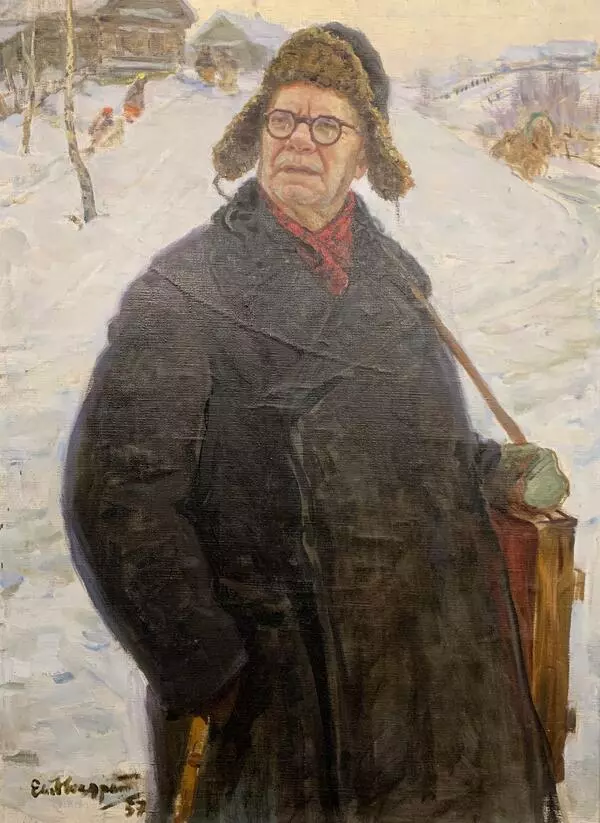Evgeny Alekseevich Nozdrin (1920–1997), a painter and teacher who served during the Great Patriotic War in the Pacific Fleet, most of all enjoyed painting fellow people of culture. The artist created an entire portrait series of outstanding creative people of his time. Among his sitters were such famous figures of Mordovia as artist Fedot Sychkov and sculptor Stepan Erzia, singer Illarion Yaushev and performer Maria Antonova, writers Ivan Pinyaev and Kuzma Abramov. The gallery of these portraits has become a unique chronicle, which represents the history and culture of Mordovia in the second half of the 20th century.
The artist painted the presented picture of the Soviet composer Leonid Ivanovich Voinov (1898–1967) in the genre of a lyrical portrait painting. The composer Leonid Voinov had a noticeable influence on the formation of solo instrumental performance. He organized an orchestra of folk instruments in the town of Temnikov. The orchestra fostered musical taste and promoted art in the Russian hinterland. The repertoire included works of Russian and Western European classics. A professor of the Moscow Conservatory, composer and pianist Alexander Borisovich Goldenweiser highly valued the creative art group. The orchestra has successfully toured around Mordovia and Russia.
The Mordovian musician is depicted sitting at a table by the window. The room is flooded by sunlight streaming from the street, music notebooks are open on the table, and the composer’s favorite instrument, the balalaika, lies a little closer to the window.
There is another telling detail that indicates the musical profession of the sitter. On the wall there is a portrait of Vasily Andreyev, a composer and performer who formed the first orchestra of Russian folk instruments. As a well-known composer, Leonid Voinov performed with the Andreev Orchestra, playing balalaika.
Thanks to the bright color palette, warm shades and the play of reflections, the portrait by Leonid Voinov is melodic and lyrical. At the same time, the pictorial space of the painting is not limited to the room: it is continued in the landscape outside the window, toward which the composer’s gaze is directed. Thus, the artist emphasizes the flight of inspiration of the composer’s creative nature.
The artist painted the presented picture of the Soviet composer Leonid Ivanovich Voinov (1898–1967) in the genre of a lyrical portrait painting. The composer Leonid Voinov had a noticeable influence on the formation of solo instrumental performance. He organized an orchestra of folk instruments in the town of Temnikov. The orchestra fostered musical taste and promoted art in the Russian hinterland. The repertoire included works of Russian and Western European classics. A professor of the Moscow Conservatory, composer and pianist Alexander Borisovich Goldenweiser highly valued the creative art group. The orchestra has successfully toured around Mordovia and Russia.
The Mordovian musician is depicted sitting at a table by the window. The room is flooded by sunlight streaming from the street, music notebooks are open on the table, and the composer’s favorite instrument, the balalaika, lies a little closer to the window.
There is another telling detail that indicates the musical profession of the sitter. On the wall there is a portrait of Vasily Andreyev, a composer and performer who formed the first orchestra of Russian folk instruments. As a well-known composer, Leonid Voinov performed with the Andreev Orchestra, playing balalaika.
Thanks to the bright color palette, warm shades and the play of reflections, the portrait by Leonid Voinov is melodic and lyrical. At the same time, the pictorial space of the painting is not limited to the room: it is continued in the landscape outside the window, toward which the composer’s gaze is directed. Thus, the artist emphasizes the flight of inspiration of the composer’s creative nature.




